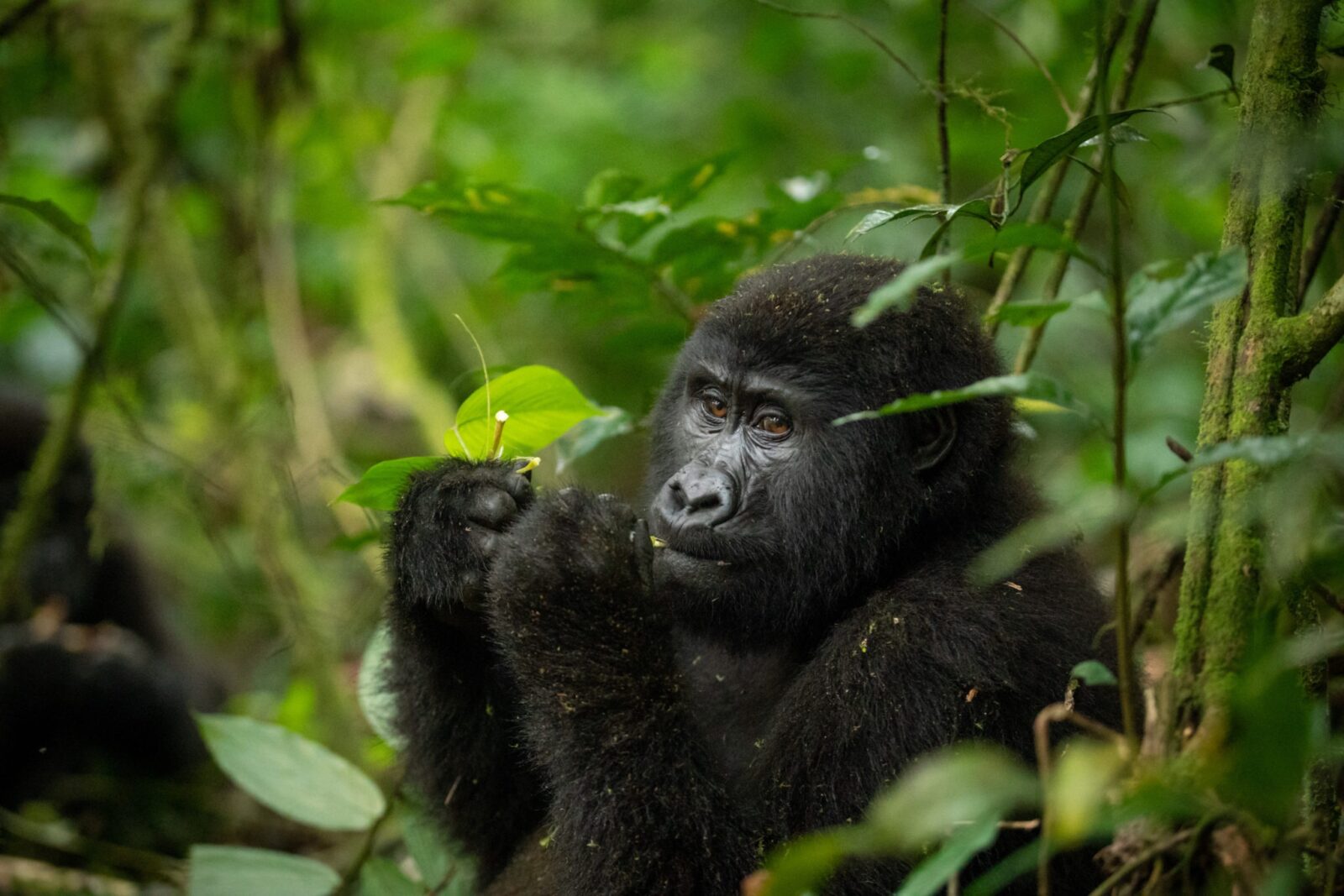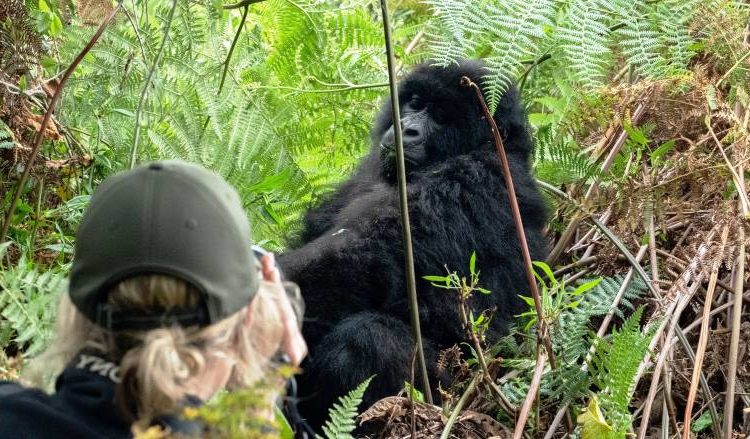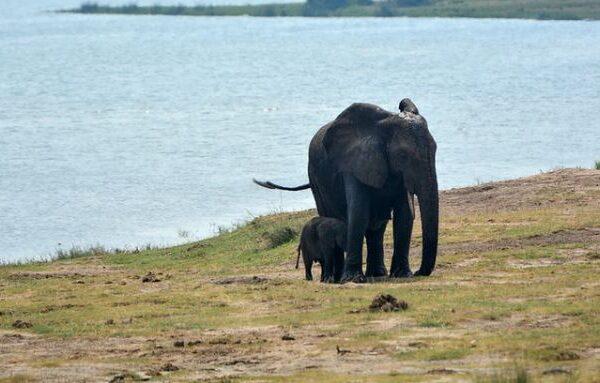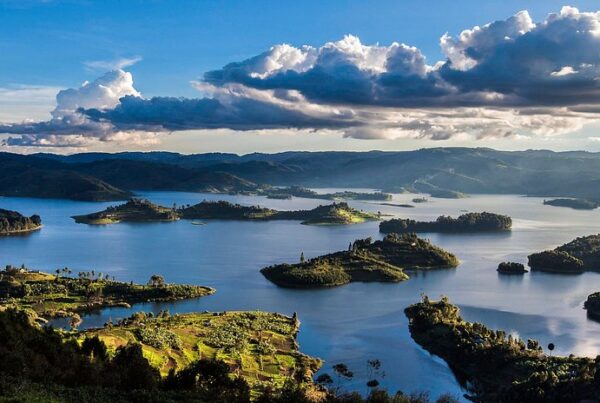The History and Significance of Bwindi Impenetrable National Park
A Timeless Forest of Global Importance
In the far reaches of southwestern Uganda, where the ridges of the Albertine Rift cradle a sea of mist and ancient trees, lies Bwindi Impenetrable National Park, a place of extraordinary natural and cultural importance. Known across the world for harboring nearly half of the planet’s remaining endangered mountain gorillas, Bwindi is not only a sanctuary for rare wildlife but also a living monument to Africa’s ecological history and human resilience. To step beneath its dense canopy is to journey into a forest that has remained largely unchanged for millennia, offering a rare glimpse into what much of the continent may once have looked like before human expansion reshaped the land.
The story of Bwindi is not only one of biodiversity but also of human interaction, conservation struggle, and cultural significance. It is a tale that weaves together indigenous traditions, global recognition, and ongoing scientific discovery, making it one of the most significant protected areas on the African continent. Understanding the history and significance of this park requires an exploration of its origins, its role in protecting endangered species, its cultural heritage, and its contribution to global conservation.
Origins of the Bwindi Forest
Long before it was designated as a protected area, the forest now called Bwindi stood as an ancient stronghold of biodiversity. Estimated to be over 25,000 years old, Bwindi has survived climatic shifts, glaciations, and human encroachments, making it one of the most biologically rich forests in Africa. Its survival is partly due to its rugged terrain, characterized by steep slopes, deep valleys, and thick vegetation that made large-scale human settlement and cultivation difficult.
For centuries, Bwindi served as the home of the Batwa pygmies, one of Africa’s oldest surviving indigenous groups. The Batwa lived as hunter-gatherers, deeply attuned to the rhythms of the forest, relying on it for food, medicine, and spiritual identity. The forest was not merely a resource but a sacred space, imbued with meaning and ritual. Their intimate knowledge of plants, animals, and ecological patterns remains unparalleled, forming an essential part of the cultural history of Bwindi.
The Establishment of Bwindi as a Protected Area
The journey toward protecting Bwindi began in the mid-20th century as the pressures of agriculture, logging, and human expansion threatened the forest’s ecological balance. In 1942, parts of the forest were designated as a forest reserve by the British colonial administration. However, protection remained limited, and encroachment continued. It was not until 1964 that stricter measures were introduced, with the creation of the Bwindi Impenetrable Central Forest Reserve, which merged several smaller reserves into a larger protected area.
The turning point in Bwindi’s history came in 1991, when the Ugandan government elevated the area to the status of a national park. This decision was driven by the urgent need to protect the mountain gorillas, whose numbers had plummeted due to poaching, habitat loss, and human-wildlife conflict. With the establishment of Bwindi Impenetrable National Park, the forest gained legal protection, enabling structured conservation strategies, stricter anti-poaching measures, and international support.
In 1994, Bwindi’s global significance was formally recognized when it was inscribed as a UNESCO World Heritage Site. This acknowledgment was based on both its exceptional biodiversity and its status as a critical habitat for endangered species. The designation elevated Bwindi from a national treasure to a site of global heritage, ensuring that its protection would become a matter of international concern and cooperation.
Ecological Significance of Bwindi
The ecological importance of Bwindi cannot be overstated. Encompassing 321 square kilometers, the park hosts a remarkable variety of ecosystems, from lowland rainforests to montane forests and bamboo zones. Its altitudinal range, from 1,160 meters to over 2,600 meters above sea level, creates a mosaic of habitats that support an astonishing range of species.
Bwindi is home to over 350 bird species, including 23 Albertine Rift endemics such as the African Green Broadbill and Shelley’s Crimsonwing. It also shelters more than 200 species of butterflies, 120 species of mammals, and countless reptiles, amphibians, and plants. Among its flora, many species are rare or endemic, some with medicinal properties long recognized by the Batwa and other local communities.
The park’s most iconic residents are the mountain gorillas (Gorilla beringei beringei). Nearly half of the world’s population of these great apes resides within Bwindi’s borders, making the park a cornerstone of global gorilla conservation. Beyond gorillas, Bwindi supports other primates such as chimpanzees, black-and-white colobus monkeys, and L’Hoest’s monkeys, further emphasizing its significance as a primate haven.
The forest also plays a vital ecological role beyond its borders. Its dense vegetation and wetlands act as a watershed, feeding rivers and streams that sustain agriculture and human populations in surrounding areas. Its carbon sequestration capacity contributes to global climate regulation, making Bwindi not only a local and regional asset but also a contributor to global ecological health.
Cultural Significance and the Batwa People
While the park is celebrated for its natural wonders, its cultural significance is equally profound. The Batwa pygmies, who inhabited Bwindi for centuries, hold a unique place in its history. Their displacement in 1991, when the park was gazetted, remains a subject of both debate and conservation ethics. Although they were removed in order to ensure strict protection of gorillas and forest ecosystems, the Batwa lost access to their ancestral lands, resulting in cultural and economic hardships.
Efforts have since been made to integrate Batwa heritage into conservation and tourism. Cultural trails and educational programs now highlight their traditional forest knowledge, storytelling, and survival skills. These initiatives serve a dual purpose: preserving the Batwa cultural identity and enriching the experiences of visitors who come to understand Bwindi as both a natural and human heritage site.
The relationship between conservation and culture at Bwindi highlights the complex balance between protecting biodiversity and respecting indigenous rights. It is a reminder that the history of Bwindi is not only ecological but also profoundly human.
Conservation Achievements and Challenges
The protection of Bwindi has produced notable conservation successes. Mountain gorilla numbers, once critically endangered and dwindling, have shown gradual recovery. Conservation organizations, local communities, and international donors have collaborated to strengthen anti-poaching patrols, veterinary interventions, and community-based programs that link human welfare with gorilla survival.
Tourism revenue has played a pivotal role in this success. Gorilla trekking, carefully regulated to minimize stress and disease transmission, generates funds that support both conservation and community development. A significant portion of the revenue is allocated to local communities, providing incentives for conservation and reducing reliance on forest resources.
Yet challenges remain. Population growth in surrounding areas increases demand for farmland, creating pressure on park boundaries. Human-wildlife conflict occasionally arises, as gorillas and other animals raid crops. Disease transmission between humans and gorillas remains a constant threat, particularly respiratory illnesses. Climate change introduces further uncertainty, potentially altering habitats and food availability within the forest.
Despite these challenges, Bwindi stands as a conservation success story, proving that with commitment, collaboration, and sustainable tourism, even critically endangered species can be safeguarded.
Bwindi as a Global Research and Education Hub
Bwindi is not only a site for tourism but also a living laboratory for scientific research. Ecologists, primatologists, ornithologists, and anthropologists conduct long-term studies within the park, generating knowledge that informs global conservation strategies. The monitoring of gorilla behavior, health, and population dynamics has produced critical insights into primate biology and conservation science.
Educational programs and collaborations with universities further extend Bwindi’s impact. Students and researchers from around the world travel to the park to study its ecosystems, contributing to a growing body of knowledge while fostering international networks of conservation expertise. This scientific significance adds another layer to Bwindi’s global importance, making it a hub where theory and practice converge in the effort to protect biodiversity.
Tourism and the Global Appeal of Bwindi
The significance of Bwindi extends beyond conservation and science into the realm of global tourism. Gorilla trekking has become one of Africa’s most coveted wildlife experiences, attracting travelers from every corner of the world. The chance to spend an hour in the company of a gorilla family, observing their daily routines and intimate interactions, is often described as life-changing.
Tourism in Bwindi is carefully regulated, with limited permits issued daily to reduce human impact on gorillas. This exclusivity has elevated the value of the experience, aligning with conservation goals while ensuring that tourism remains both sustainable and impactful.
Beyond gorillas, Bwindi attracts visitors for birdwatching, cultural experiences with the Batwa, forest hikes, and scenic views of the Albertine Rift. Luxury lodges and eco-friendly accommodations around the park enhance the visitor experience, blending comfort with wilderness immersion. The economic benefits of this tourism ripple outward, supporting local communities and national revenue while reinforcing the global profile of Bwindi as a premier destination.
The Legacy and Future of Bwindi
The history of Bwindi Impenetrable National Park is a narrative of survival—of a forest that has endured for millennia, of gorilla families that have adapted against the odds, and of human communities that continue to find balance between tradition and modern conservation. Its significance extends beyond Uganda, standing as a global beacon of what can be achieved when biodiversity is valued, protected, and integrated into sustainable human development.
The future of Bwindi depends on continued vigilance, adaptation to emerging challenges, and the strengthening of partnerships between governments, conservation organizations, scientists, and local communities. It is a shared responsibility that calls for global commitment, as the survival of Bwindi’s ecosystems resonates far beyond its borders, influencing climate, biodiversity, and cultural heritage worldwide.
A Call to Experience and Protect
Bwindi Impenetrable National Park is more than a forest; it is a living testament to resilience, diversity, and interconnectedness. Its history speaks of ancient ecosystems and cultural traditions, its present reflects conservation triumphs and challenges, and its future depends on continued global stewardship. To walk in its misty valleys and stand in the presence of gorilla families is to encounter both nature’s grandeur and humanity’s responsibility.
For those seeking to experience the majesty of Bwindi while contributing to its protection, it is recommended to plan journeys with professional and ethical operators. Booking safaris and tours through WildHorn Africa ensures not only expert guidance and exclusive access but also the knowledge that every visit directly supports conservation and local communities. With WildHorn Africa, travelers are invited to witness the timeless beauty of Bwindi while becoming active participants in its preservation for generations to come.





 WildHorn Africa – Authentic and unforgettable tours across Africa, guided by local experts who know the land, wildlife, and culture best.
WildHorn Africa – Authentic and unforgettable tours across Africa, guided by local experts who know the land, wildlife, and culture best.


